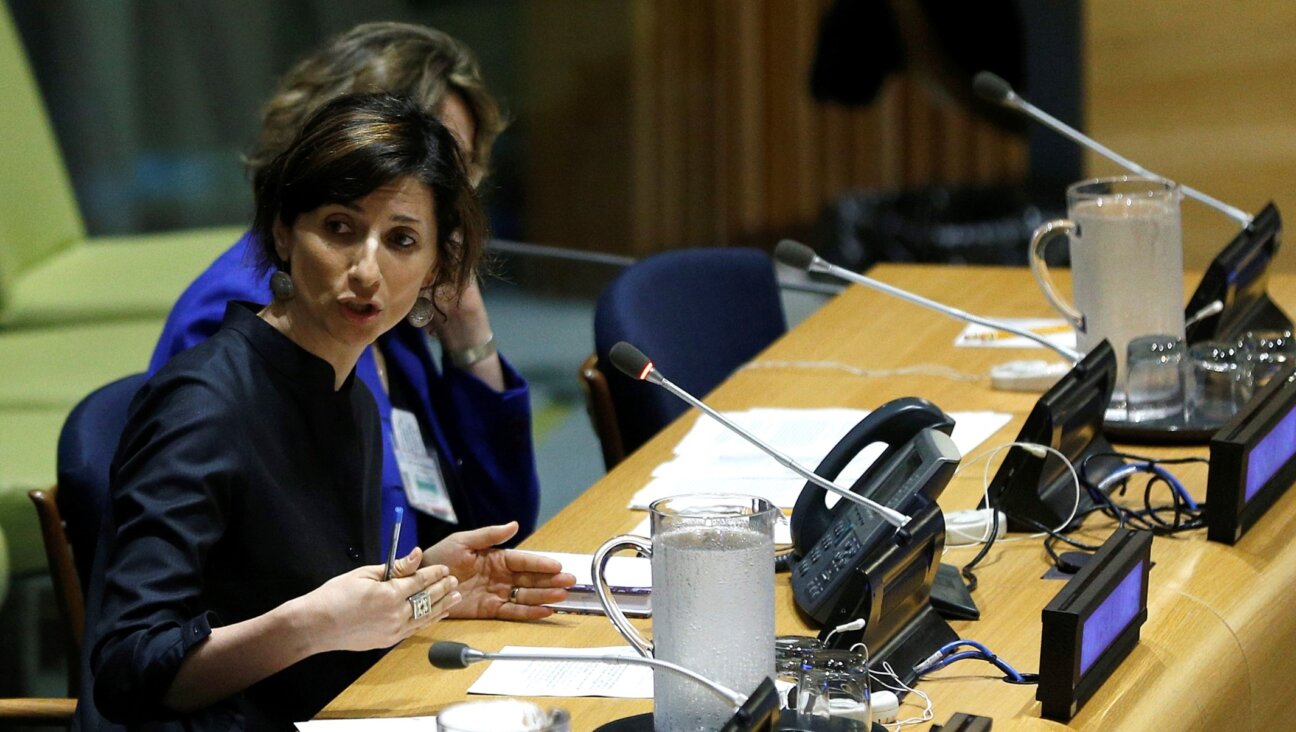‘The Righteous’: An Anthology of Heroes
Following a two-year correspondence, I finally met historian Sir Martin Gilbert at the February 19 launch of his latest opus, “The Righteous: The Unsung Heroes of the Holocaust” (Henry Holt & Co.), at the Anti-Defamation League’s headquarters. In October 2001 I received a letter from London from Gilbert — author of 40 books, acclaimed biographer of Winston Churchill, chronicler of the Holocaust and avid Forward reader — inquiring about my “Sugihara story” for inclusion in “a book I am writing about non-Jews who helped Jews during the war.”
In the audience were survivors Vladka and Benjamin Meed and the ADL’s executive director, Abraham Foxman, who as a 4-year-old in Vilna was rescued by his nanny, Bronislawa Kurpi, and whose story and childhood photos are featured in Gilbert’s book.
Recapping his Holocaust research begun at Yad Vashem, Gilbert recalled, “I could not get through a whole day…. Sometimes I had to close the books and leave.” He recalled witnessing “a funeral on Mount Zion at a Christian cemetery” where “the mourners all looked like Polish Jewish survivors…. I was told the funeral was for an Oscar Schindler, who saved their lives.”
Gilbert went on to describe the tremendous outrage in Israel’s press and “in the streets” when Schindler was first honored “because he was a German and had been a member of the Nazi Party.”
Gilbert detailed his amazement at the “incredible ingenuity and courage needed to hide a Jew, a Jewish family… at the risk of [rescuers’] own lives.” Of the hundreds of rescuers cited in the book, Gilbert spoke about Jan Zabinski, director of the Warsaw Zoo. “In 1942, at the beginning of the deportations, he smuggled more than 400 Jews and hid them in the zoo cages and tunnels till he found homes for them…. Three Jewish families were hiding in the attic of the house where he entertained Germans. His wife continued the rescue after her husband was arrested.”
Another hero, Polish surgeon Feliks Kanabus, developed a plastic-surgery technique to reverse the appearance of circumcision. Noted Gilbert, “At the risk of the lives of his three children and his mother,” he managed to get into the Warsaw Ghetto, helped save his Jewish colleague Michael Tursz and issued “false certificates to circumcised Jews stating that their circumcision was ‘necessitated by an infection’… More than 250 men who had Aryan features… survived.” Another ingenious rescuer was a British soldier named Charles Coward. Interned at a prisoner of war camp attached to Auschwitz III (the slave labor camp at Buna about whose cruelty, Gilbert noted, both Elie Wiesel and Primo Levi would later write), Coward came up with “a scheme where a dead POW or foreign slave laborer would be stripped, his corpse taken to Auschwitz and thrown on the live wire… a living Jew given his clothing, identity and saved…. Coward neither sought nor expected recognition. ‘It was the decent thing to do… the human Christian thing to do,’” he was said to have said.
During Gilbert’s post-lecture book-signing session, one of the survivors whose story appears in the book pointed to a little girl in a photograph captioned: “Helena and Jozef Biczyk with the two Jewish sisters whom they hid in Warsaw.” “That’s me!” she said, pointing to the picture of Zofia Fainsztejn, then 7 years old. Gilbert smiled as he autographed her copy of his book.
* * *|
At the March 3 private reception of “Picturing the Times: Eastern European Illustrators at the New York Times” — an exhibition at the School of Visual Arts hosted by the New York Times and the Polish Consulate in New York — I spoke with Latvian native Maris Bishofs, whose work was on display. Bishofs’s illustrations have appeared in publications including Fortune and Harper’s and have graced several Time Magazine covers.
After immigrating to Israel in 1972, he was published in Yediot Aharonot, exhibited at the Tel Aviv Museum and the Israel Museum in Jerusalem and, representing Israel, won third-prize in the international “Cartoon ’75” competition held in West Berlin.
I assumed Bishofs was Jewish. “No, I am Latvian. My family is Latvian. My father was sent to Siberia,” Bishofs said. “So was mine,” said I. “My ex-wife Viktoria’s father was the composer Moshe Weinberg…. I spent eight years in Israel. I felt good in Israel. I speak Hebrew, my daughter was born in Israel.” My “Israel” question still hung in the air. “Viktoria’s grandfather was [Solomon] Mikhoels,” Bishofs said. “Do you know who that was?” As they say in Yiddish, vos fara frage — what a question! “Of course. He was the principal actor of the Moscow Yiddish State Art Theater.”
When I got home following the reception at the Polish consulate, I checked Nahma Sandrow’s “Vagabond Stars” (Harper & Row), in which she quotes Mikhoels “reflecting on 1919: ‘In the era when worlds perished and new worlds took their place, a miracle occurred, a tiny miracle perhaps, but for us Jews it was big: the Jewish theater was born.’”
Sandrow notes: “In 1948 Mikhoel’s body was found buried in bloody snow on a street in Minsk; in 1952 the doors of the Moscow Yiddish State Theater were bolted. The miracle was over.” Is it any wonder why Mikhoels’s granddaughter and her Latvian husband sought refuge in Israel?























